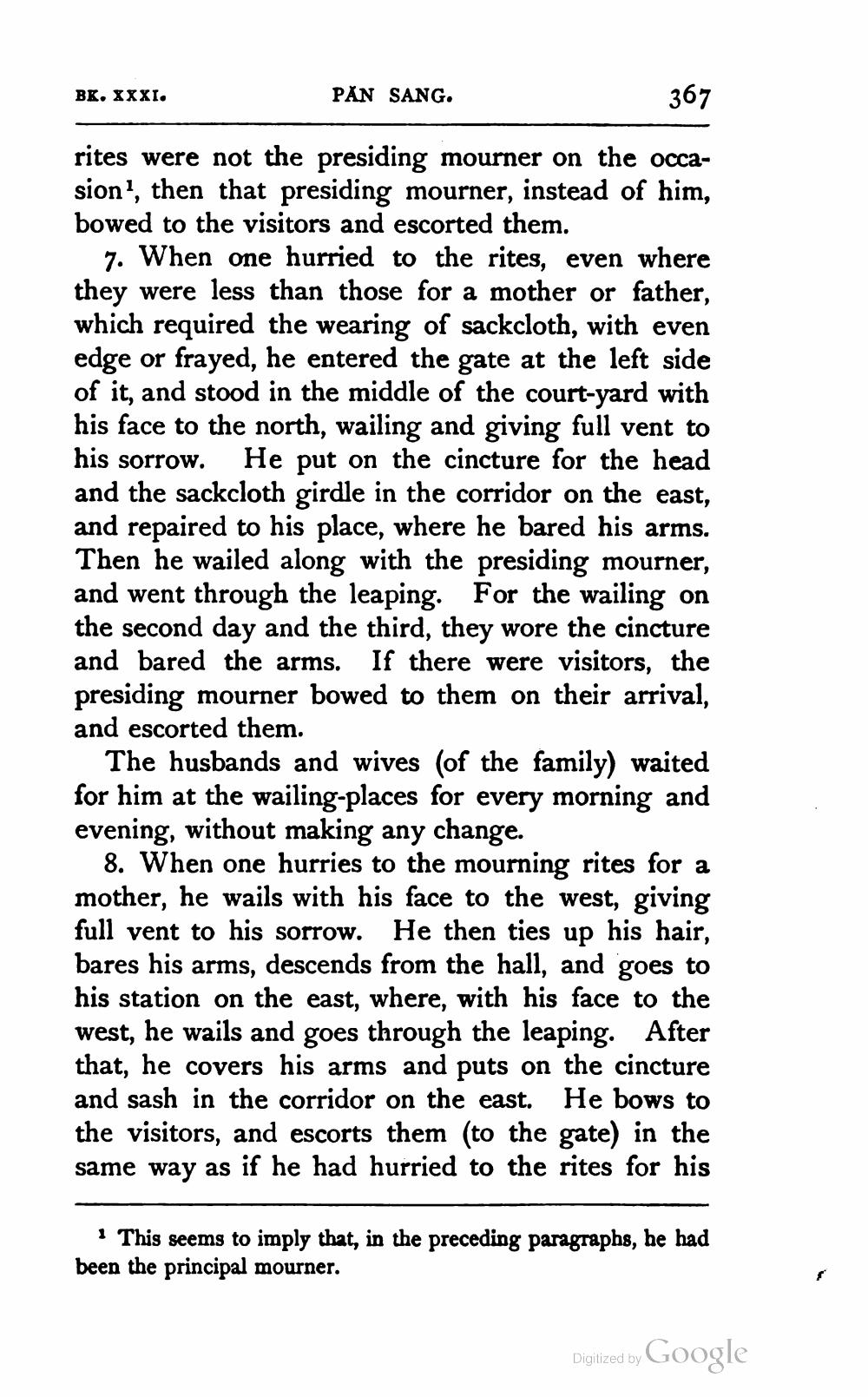________________
BK. XXXI.
PÄN SANG.
367
rites were not the presiding mourner on the occasion', then that presiding mourner, instead of him, bowed to the visitors and escorted them.
7. When one hurried to the rites, even where they were less than those for a mother or father, which required the wearing of sackcloth, with even edge or frayed, he entered the gate at the left side of it, and stood in the middle of the court-yard with his face to the north, wailing and giving full vent to his sorrow. He put on the cincture for the head and the sackcloth girdle in the corridor on the east, and repaired to his place, where he bared his arms. Then he wailed along with the presiding mourner, and went through the leaping. For the wailing on the second day and the third, they wore the cincture and bared the arms. If there were visitors, the presiding mourner bowed to them on their arrival, and escorted them.
The husbands and wives of the family) waited for him at the wailing-places for every morning and evening, without making any change.
8. When one hurries to the mourning rites for a mother, he wails with his face to the west, giving full vent to his sorrow. He then ties up his hair, bares his arms, descends from the hall, and goes to his station on the east, where, with his face to the west, he wails and goes through the leaping. After that, he covers his arms and puts on the cincture and sash in the corridor on the east. He bows to the visitors, and escorts them to the gate) in the same way as if he had hurried to the rites for his
· This seems to imply that, in the preceding paragraphs, he had been the principal mourner.
Digitized by Google




